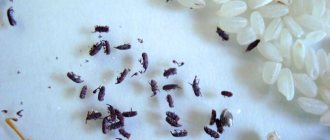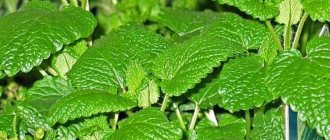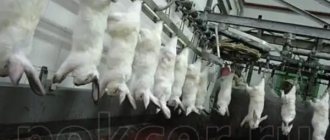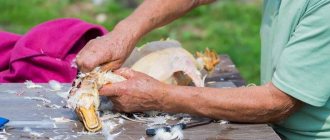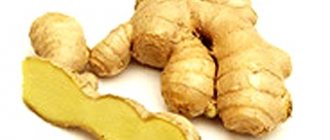Dried fruits in concentrated form contain a large amount of vitamins and microelements necessary for the human body. During the winter, they provide us with the necessary nutrients. Properly made preparations can be used all year round for preparing drinks, baked goods and various desserts. Therefore, it is important to know how to store dried fruits for the winter at home.
What is the benefit
When drying fruits, water evaporates and a small amount of vitamins is destroyed. But all minerals, trace elements, plant fibers, and most vitamins remain. They support the human body in winter, and especially in spring.
Vitamins are one of the most important components of dried fruits. They are preserved almost completely even after exposure to temperature. Dried fruits, even after long-term storage, contain more useful substances than fresh fruits that have been frozen.
The entire harvest harvested at the dacha should not be immediately frozen or canned. It is better to dry or wither some of it to support the body with vitamins in winter.
Features of preparing dried fruits
It is recommended to dry fruits purchased or stored in significant quantities before storing them for long-term storage. To do this, the entire available volume must be reviewed in order to select still wet specimens. Then place them on a paper or wooden surface and leave them to dry outdoors or indoors, choosing a dark place for this. But those dried fruits that look completely dried should also be additionally dried at t° + 22-30° C for 2 days.
Dried fruits must be sorted before packaging
Attention! Mold and bugs will not appear on dried fruits if they are dried in the oven for about an hour at t° +70° C, spread out in one layer.
The following manipulation will help determine the readiness of dried fruits for storage. Squeeze a handful of fruits in your palm and then unclench it. If the pieces remain stuck together into one lump and do not crumble, it means that the fruit is still wet and requires further drying. In this regard, you should not store dried fruits with different degrees of moisture together, since they will gain moisture from each other.
How to choose a quality product
When purchasing dried fruits, pay special attention to their appearance. Many are misled by the bright color and glossy surface of dried fruits. But their appetizing appearance is not at all an indicator of quality. And the content of useful substances in such a product may even raise doubts.
Many manufacturers treat dried fruits with various substances to give them a marketable appearance. With their help, you can get bright, amber-colored dried apricots and raisins with a shiny, beautiful surface. Which, moreover, have a very pleasant, persistent, unnatural aroma.
To avoid buying a healthy product treated with sulfur and glycerin, you should choose dried fruits with a matte surface. This is an indicator that they are natural. After all, during the drying process, almost all the moisture evaporates, which means there can be no shine.
- Naturally dried dried apricots have a dark shade, sometimes with a grayish coating. And sometimes a not-so-appetizing brown color. But if it is bright, orange, it is the result of exposure to chemical dyes.
- The prunes, which have a brownish tint, were probably in boiling water. This means that it is no longer so useful. A shiny surface is evidence of treatment with wax or glycerin. At best - vegetable oil.
- Real raisins should be brown if they are made from light grape varieties. Dark grapes produce black raisins, sometimes with a bluish tint.
Fruits that have been dried under natural conditions are not very presentable in appearance and have a natural, dull aroma. These dried fruits are truly healthy because they contain vitamins and essential microelements, unlike those that contain a set of preservatives, stabilizers, dyes and flavors.
Choosing a storage location
For cellar owners, the problem is solved very simply: the prepared dried fruits are simply transferred to a cool place and removed from there in small batches as needed.
Owners of city apartments will have a slightly more difficult time, but they will also find a suitable place. Most often it becomes the door or bottom drawers of the refrigerator.
The freezer is not particularly suitable for storing dried products, but in special cases it is also used. At the same time, they try to put dried fruits into separate bags, each of which contains only one portion. Re-freezing is not allowed.
If it is impossible to use a refrigerator, they try to remove containers with dried products away from the kitchen. In such cases, ordinary clothing or even bookcases can serve. By the way, if you arrange the cute jars correctly, you can create a very unusual and absolutely exclusive design with your own hands.
In the kitchen, shelves are used to place dried fruits, as far away from the stove and refrigerator as possible.
Unlike just ripening fruits, their dried counterparts do not like sunlight, so darkened rooms and cabinets closed from light are used for storage.
How to prepare for storage
If any dried fruits have traces of pests, wormholes or rotten areas, such dried fruits are thrown away without regret, as they will cause the destruction of all other fruits.
- Storing dried fruits is possible only when they are completely dried. Remaining moisture will lead to the formation of mold and rotting of dried fruits. But you can’t overdry them either - then they will have a bitter taste.
- According to all the rules, dried fruits and berries lose 75% - 85% of moisture.
- If dried fruits have a higher percentage of moisture than necessary, they are dried first outside (1 day), and then in the oven at +60°C -+75°C for at least 1 hour.
Drying Features
Despite the variety of fruits, they all must undergo the same procedure before drying:
- The fruits are sorted, removing bruised or damaged fruits.
- Future raw materials are thoroughly washed; to get rid of chemicals efficiently, experts advise using a soda solution.
- Fruits prepared in this way are freed from inedible parts and cut into thin pieces. Slices of light fruit are pre-soaked in water with soda or citric acid. To obtain a rich plum color, it is calcined for several minutes at temperatures above 100 degrees.
- It is recommended to dry each variety separately.
When the preliminary work is completed, you can begin the process itself. Since ancient times, apples and pears have been dried in the fresh air and bright sun, covered from flies with a piece of gauze. In this case, unsanitary conditions are observed, which can subsequently lead to diseases.
Today, the ancient method has practically disappeared into oblivion; instead, more progressive methods are used to help cope with the harvest much faster and safer for health. You can preserve fruits using:
- Ovens. Not the most rational approach: the sliced pieces may turn out to be burnt on one side and remain under-dried on the other. This way you can try to dry only apples and pears.
- Batteries. This long and labor-intensive process is more suitable for owners of their own heating boilers. You can also use it during the heating season in ordinary apartments.
- Air fryer. The capacity of the device is slightly smaller than that of an oven, but due to the high temperature, drying will take place much faster. This way you can save apples, pears, apricots, and plums for the winter.
- Microwave ovens. Microwaves cope well with large harvests, but require close attention: if the drying time is exceeded, the fruits may simply burn.
- Electric dryers. The most attractive and safe option for all fruits. Here you can easily and naturally create raisins, dried apricots, prunes, and get dried apples and citrus slices.
When the drying process is completed, they begin an equally important activity: storing dried fruits.
How are dried fruits stored?
Fruits, if they have been dried to the extent necessary for storage, are kept in a glass, tightly closed container.
Fully sealed vacuum lids attached to glass jars are perfect for storing dried fruits. In the absence of air, harmful microorganisms and mold cannot develop.
Storing dried fruits in a vacuum can last for several years.
- For dried fruits with a high content of sucrose and fructose glass , tightly closed containers are best suited. The shelf life of dried fruits, such as prunes, dates, peaches, dried apricots, raisins, etc., with this storage increases significantly: it will be difficult for insects to reach them.
- Bags for storing dried fruits made of thick cotton, pre-soaked in salt water and well dried, are a good way to preserve your harvest. The salt will repel pests, and the fabric will absorb excess moisture, thereby preventing the formation of mold.
- Plastic containers for storing dried fruits , even food grade ones, are not the best solution. It has undesirable effects on the taste of fruits. In plastic containers they can become damp and moldy.
- Storing dried fruits in plastic bags is completely unacceptable - they will begin to deteriorate, and in addition, they will become a home for insects.
Storage period
Like any product of organic origin, dried fruits have an expiration date and certain storage conditions. We can safely say that even the very quality of everyone’s favorite delicacy is determined by its storage conditions.
These terms guarantee the preservation of all consumer properties and indicators of products established by standards, subject to compliance with storage rules for a certain period of time.
The difference between the terms is that the shelf life is the time interval during which a given product can be used, and the shelf life is considered to be the time during which the product retains all its original properties.
The shelf life of products is established from the date of production by the manufacturer.
According to Resolution No. 720 of June 16, 1997: “The service life (shelf life) of the product must be established by the manufacturer in accordance with the legislation on consumer protection, other legal acts, mandatory requirements of state standards or other mandatory rules and contained in the information about the product provided to the buyer."
Storage conditions for dried fruits
- Those dried fruits that are in a damp, warm, unventilated place are most susceptible to destructive processes. They begin to rot or mold.
- The storage temperature of dried fruits should be within +2°С -+10°С, and air humidity – 65 -75%. In addition, they should not be exposed to light, and the storage location should be well ventilated.
- Blanks in glass containers and canvas bags can be kept in pantries and kitchen cabinets, located as far as possible from bright light, stoves and heating radiators.
Storing dried fruits in the refrigerator is not always suitable due to high humidity. Fruits with a higher degree of moisture (dried apricots, raisins, dates, prunes, dried peaches, etc.) can be kept in the lower part of the refrigerator in an airtight container. In such conditions, dried fruits can be stored for quite a long time. The fruits will retain their elasticity and will be securely hidden from insects.
Preparation for storage
In order for the fruits to last as long as possible and not lose their properties, it is not enough to know how to properly store prunes and dried apricots at home. The fruits must be prepared for packaging.
The following manipulations will help extend the shelf life:
- drying If the purchased product is slightly damp, the fruits should be placed on paper and stored in a dark and well-ventilated place for several days;
- Dried fruits can harbor various insects. To minimize this likelihood, it is recommended to additionally heat the dried fruits in the oven for 1.5 hours at a temperature of 80°C;
- If dried fruits look too bright, it is recommended to soak them thoroughly in water before drying - this will help partially get rid of the chemicals.
Before packing the fruits into storage containers, they need to be sorted. It is better to throw away spoiled berries and fruits. It is also worth considering that each type of dried fruit is placed in a separate container.
How to store dried fruits: suitable containers
The most convenient way to store dried fruits is in plastic bags. But experts advise resorting to their help only if you plan to keep the fruits in the refrigerator or freezer. If the fruits will be in the kitchen or pantry, the bags are not suitable - there is an increased likelihood that pests will grow under the film.
More suitable and reliable containers are:
- glass jars, plastic containers . They can hold dry, non-sticky fruits, such as dried apples or rose hips. The container must be hermetically sealed. Once every 10-15 days, the contents should be inspected so as not to miss the appearance of mold or parasites;
- cotton bags, paper bags. Used for storing all types of dried fruits. If fabric bags are used, they must first be soaked in a concentrated saline solution and dried without rinsing. This treatment repels pests and prevents an increase in the level of humidity inside the bag;
- zip bags. A universal option, which is often used for storing “sticky” dried fruits.
This is interesting:
The most effective ways to keep mint fresh for a long time.
How, where and for how long you can store pasta.
Rules for storing lemons at home.
Frozen storage
With the advent of spacious freezers in our lives, it has become common to keep crops frozen. When frozen, dried fruits lose some of their nutrients, but if there is no other option other than freezing, it is important to know how to store dried fruits in the freezer.
No special preparation is required when storing. Dried fruits are placed in small batches in storage containers (food containers or zip-lock bags) and frozen.
It is important that dried fruits are divided into portions, because repeated freezing of the preparations is unacceptable.
Dried fruits can be stored in this way for several years, provided that they are not defrosted and the temperature in the freezer is at -20°C or lower.
Defrosting should only take place at room temperature. It is best to first place the products from the freezer on the top shelf of the refrigerator, and after a few hours at room temperature. You should not defrost the preparations in hot water or the microwave; the fruits will become tasteless and too soft.
Tips and Tricks: Steps to Increase Shelf Life
Regular inspection and ventilation
To make drying last longer, you can apply a few simple recommendations that experienced harvesters willingly share. This also applies to regular checks of dried fruit for spoilage or pests.
- Glass jars should be opened and the contents poured out once a week. If necessary, drying can be baked in the oven. You should do the same with ceramic vessels.
- Wooden boxes allow air to pass through better, so you can ventilate them only twice or even once a month.
- The canvas bags themselves provide almost free air circulation, so you can leave them alone for 2-3 months.
- All containers in which you will store dried fruits in the refrigerator can be checked even less often - once every six months. If they are deep frozen, then it is better not to touch them at all until the right moment (use). Once defrosted, they cannot be re-frozen.
If you notice the slightest signs of spoilage, immediately throw away the affected specimens. If you do not notice this, you will eventually have to dispose of all the drying.
Shelf life (table)
The shelf life of dried fruits and dried berries at different temperatures and humidity of 65-75% is presented in the table below.
| Dried fruit | Shelf life (months) at temperature | ||
| 2-10°С | 10-17°C | 18-24°C | |
| Raisin | 18 | 12 | 6 |
| Dried apricots | 12 | 6 | 3 |
| Apples/pears | 18 | 12 | 6 |
| Bananas/figs/dates | 10 | 6 | 3 |
| Cranberry/cherry | 18 | 12 | 10 |
| Rose hip | 36 | 18 | 12 |
Disinfection of dried fruits
If the infection is small, then the products are washed and sent to the oven (temperature 70-800C). Dried fruit containers are thoroughly washed, fabric bags are washed in hot water.
Another method is freezing. If moths have already appeared, sort out the dried fruits, and those that have not yet appeared, place them in the freezer for disinfection at a temperature of -10 to -15 degrees. The cabinet where the contaminated dried fruits were located should be washed with vinegar.
Maintain the temperature and humidity of the air, then dried fruits will always be tasty and beautiful.
How to prevent mold from appearing
The fight against mold involves regular (at least 2 times a month) inspection of the fruits in order to identify those on which characteristic spots have begun to appear.
Moldy fruits or berries should be thrown away immediately, and those that were next to them should be put into compote (after rinsing well beforehand).
To ensure that the moisture is evenly distributed throughout the dryer, it needs to be stirred more often.
In the place where the dried fruits are located, you need to keep an open container with soda, salt or ash: they will absorb moisture. But these absorbents will need to be replaced with fresh ones at least twice a month.
Product selection
To make dried fruits more attractive and maximize their shelf life, sellers often resort to preservatives.
The following recommendations will help you purchase a healthy and environmentally friendly product:
- You need to carefully inspect the product before purchasing. The fruits must be dry and fairly firm;
- Healthy dried berries and fruits do not have a very attractive appearance. The fruits look wrinkled, dust and grains of sand are noticeable on them. If the fruits are smooth and shiny, it means they were soaked in sunflower oil. Such dried fruits spoil quickly and have low taste;
- the fruits should smell good - this indicates that drying was carried out naturally.
If you plan to eat dried fruits or use them for cooking immediately after purchase, they must first be soaked for two hours and then rinsed with cold water.
Storing raisins
Dried grapes are stored at room temperature in a fabric bag. This product requires air. For this reason, it is not stored in tightly closed plastic containers - they are only covered with paper. Read more about storing raisins in this article.
What does it depend on?
In order for dried fruits to remain fresh for as long as possible, it is always worth taking care of the storage conditions of this product , because all sorts of shortcomings can directly affect even the shelf life or storage of the product.
Materials for packaging dried fruits must be clean, durable, free of foreign odors, dry and free from pests, because these facts directly affect the quality of the fruit.
The composition of the product is important ; unfortunately, the fruits are subjected to careful chemical processing in order to make them more attractive to buyers. Most of the dried fruits that we purchase in stores are obtained through industrial drying, which is why they lose their color and even their smell.
Manufacturers use dyes, additional additives (such as E220), glycerin, vegetable oils, and sometimes burner processing is used for accelerated drying, which gives the fruit a gasoline taste. All this in one way or another affects the shelf life of the product, sometimes for the worse.
